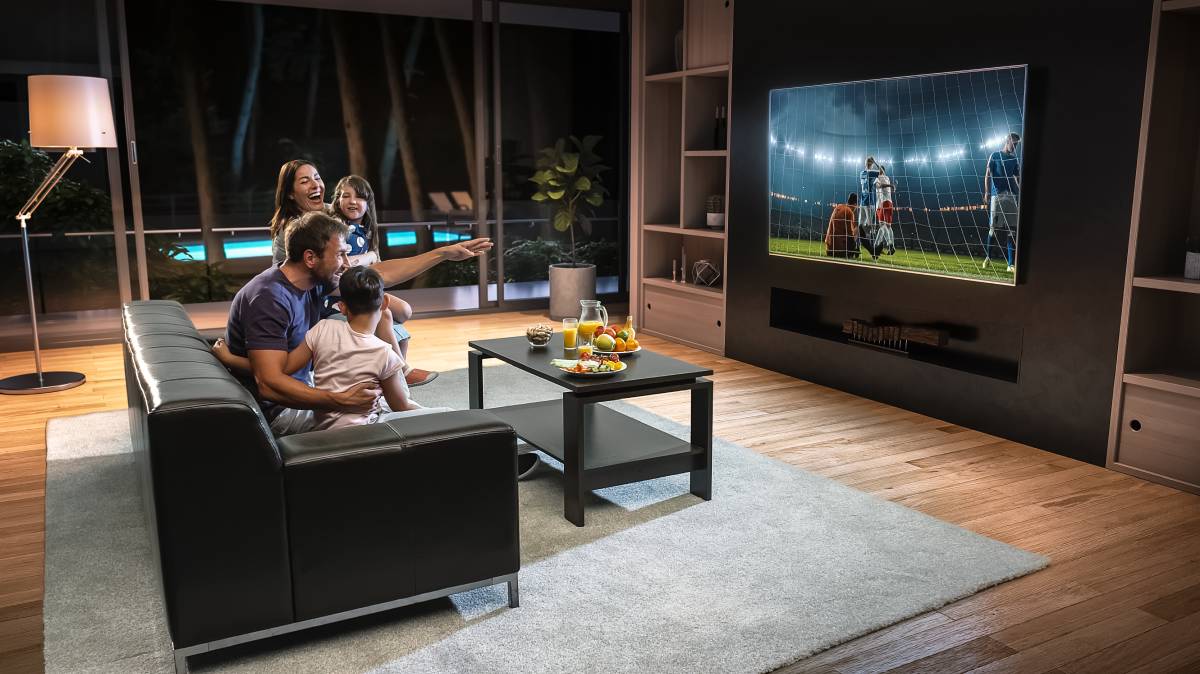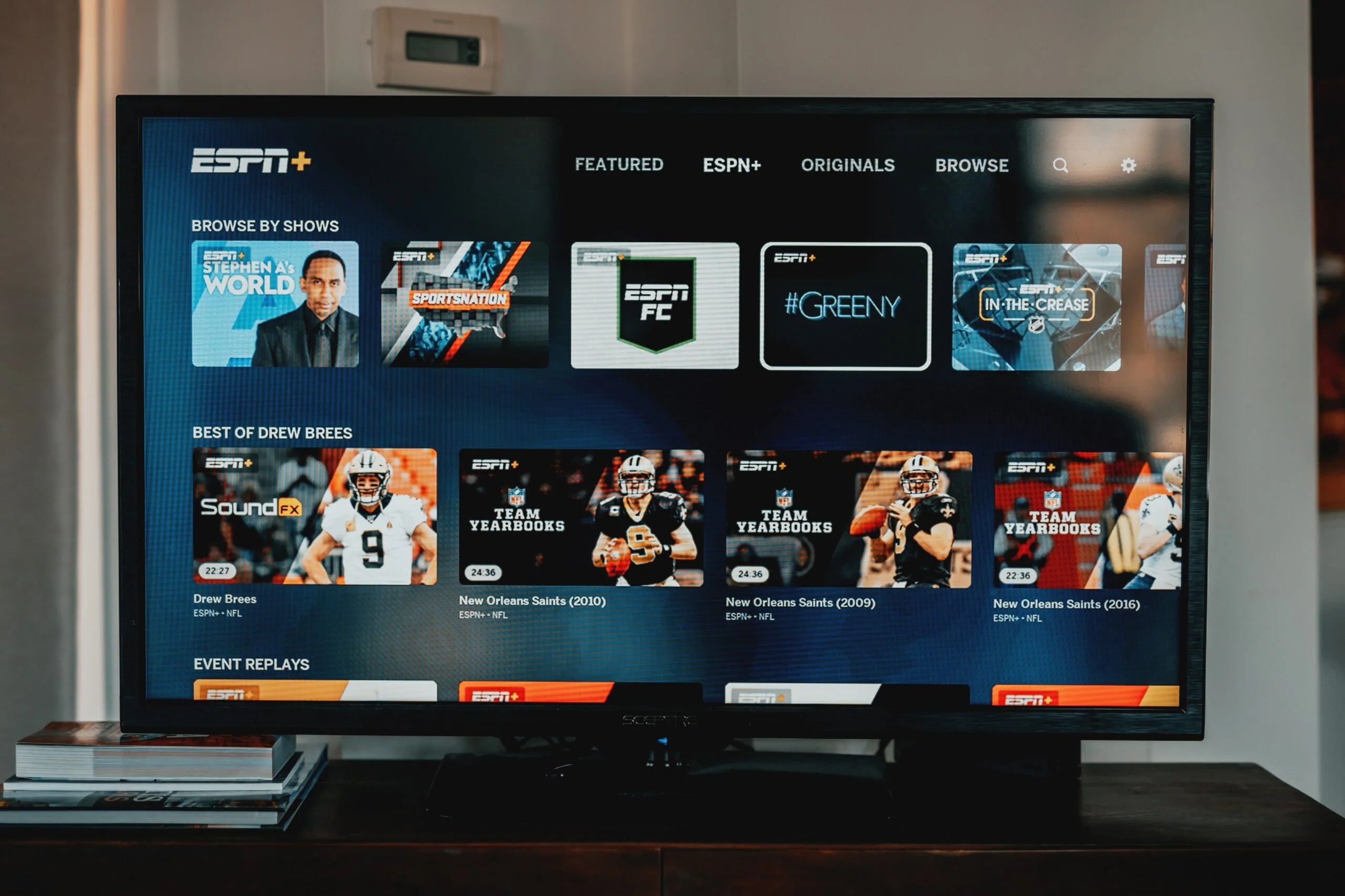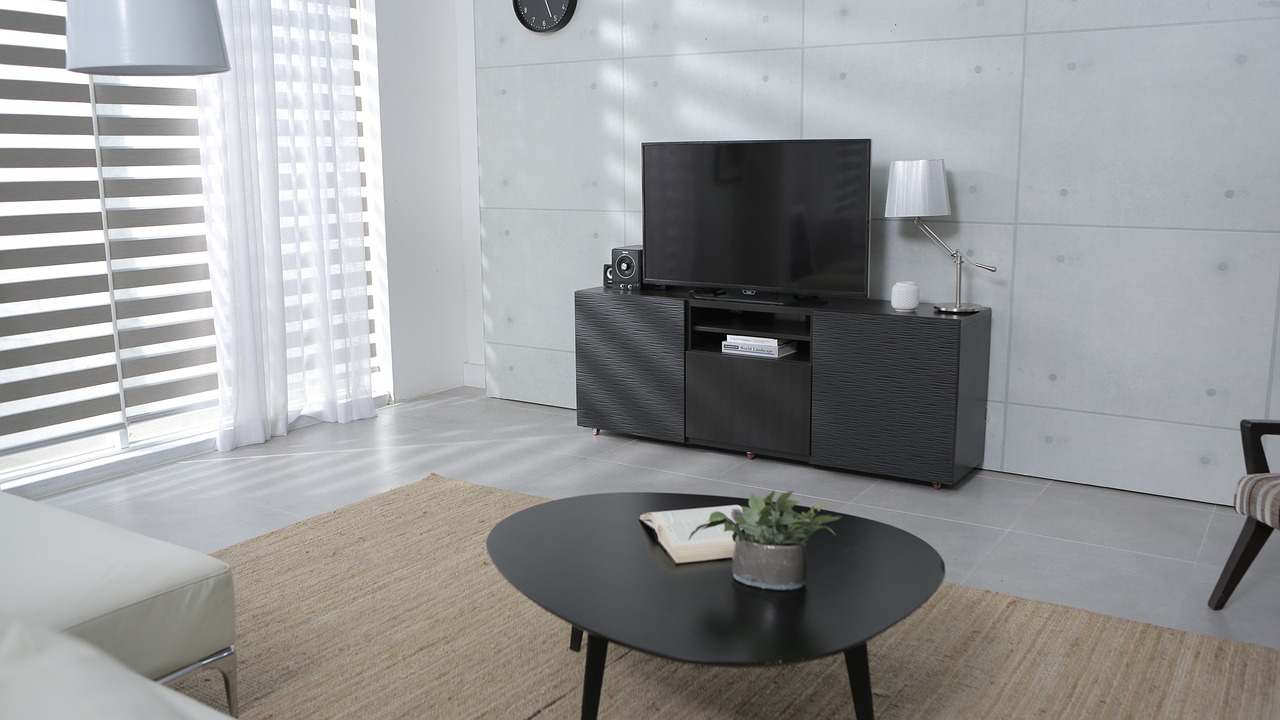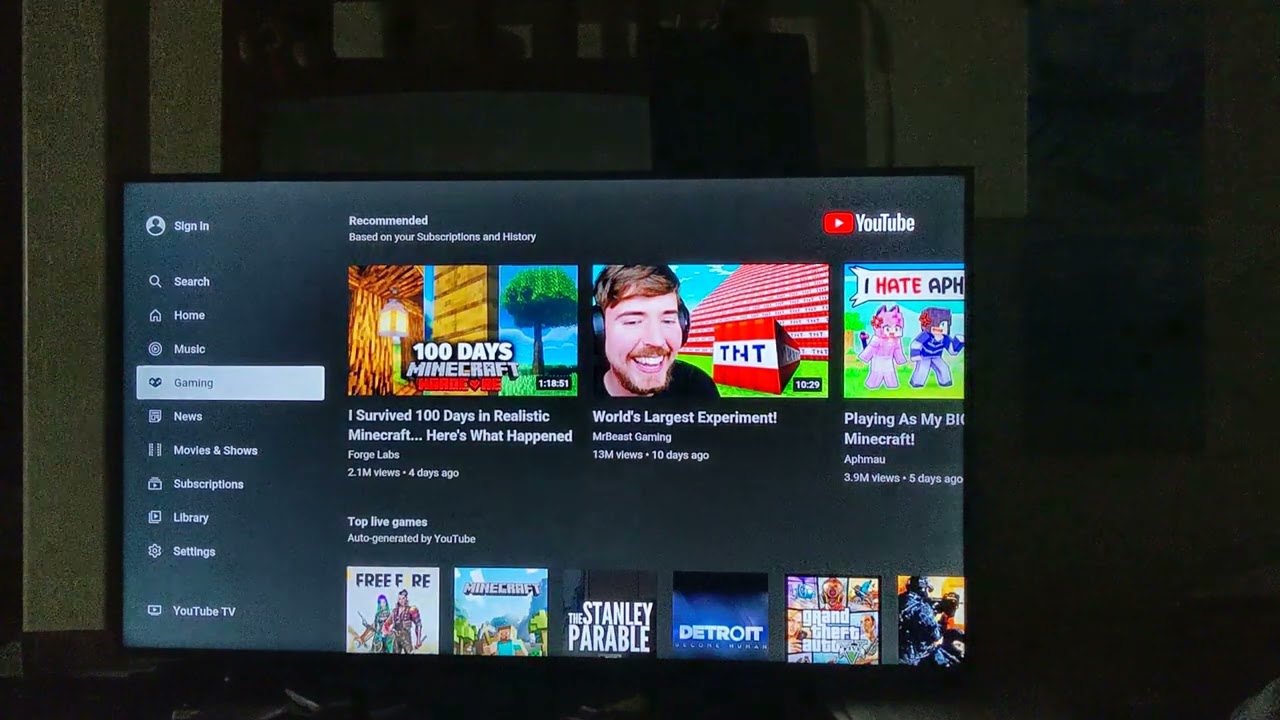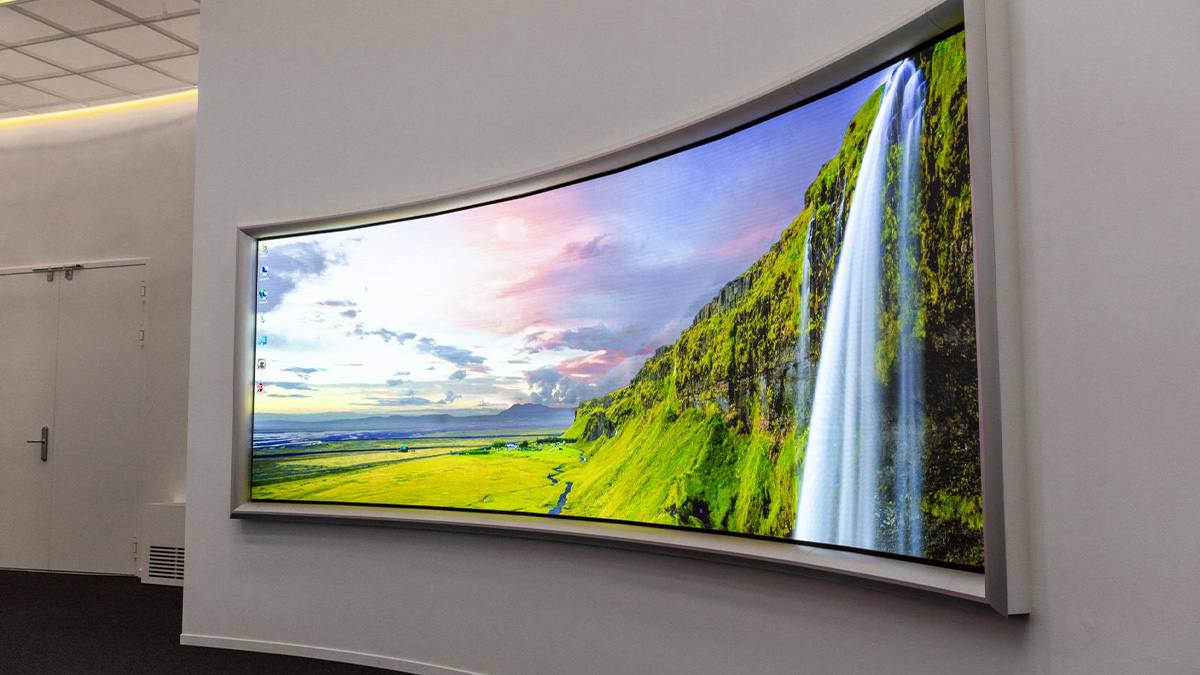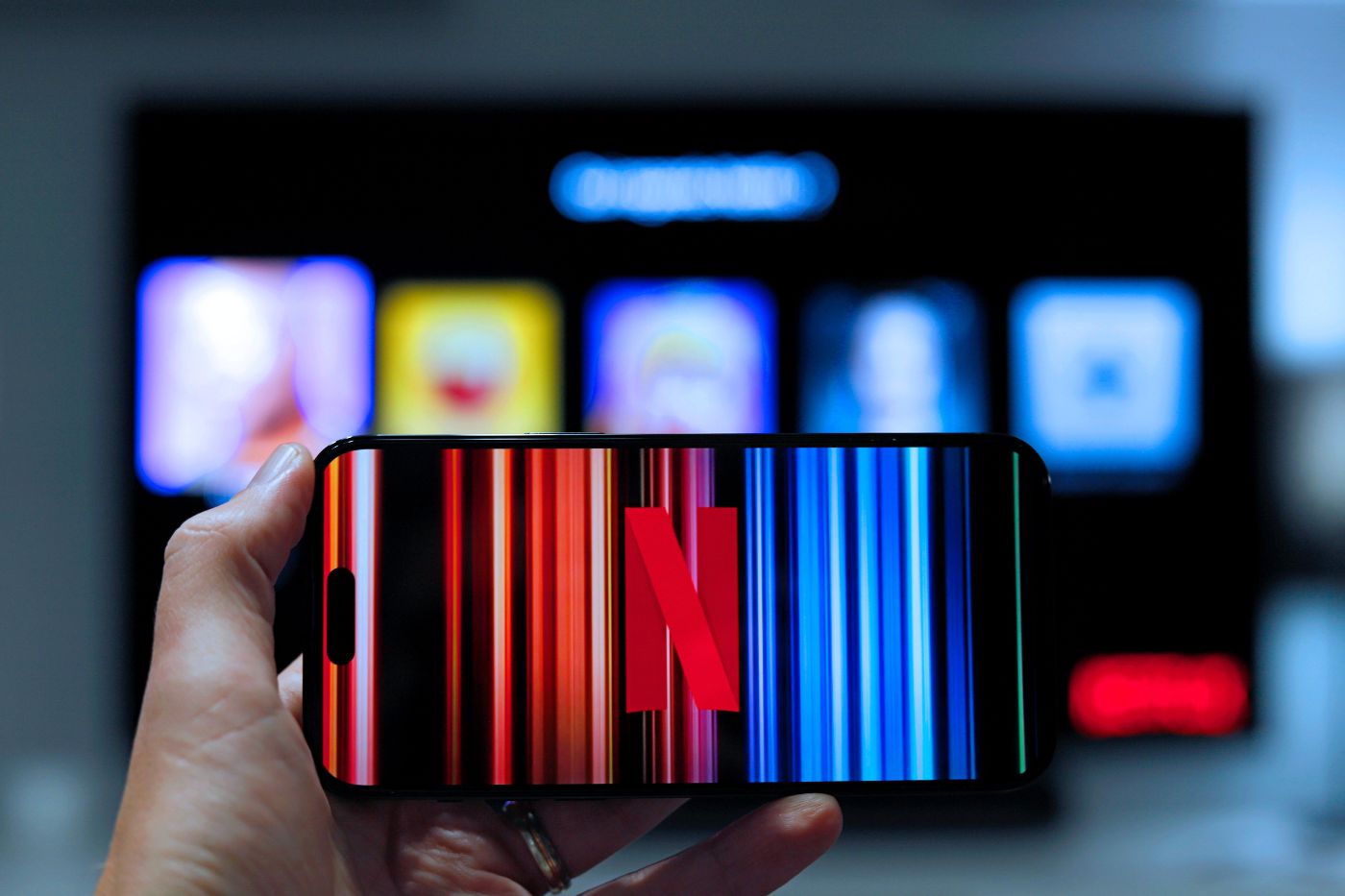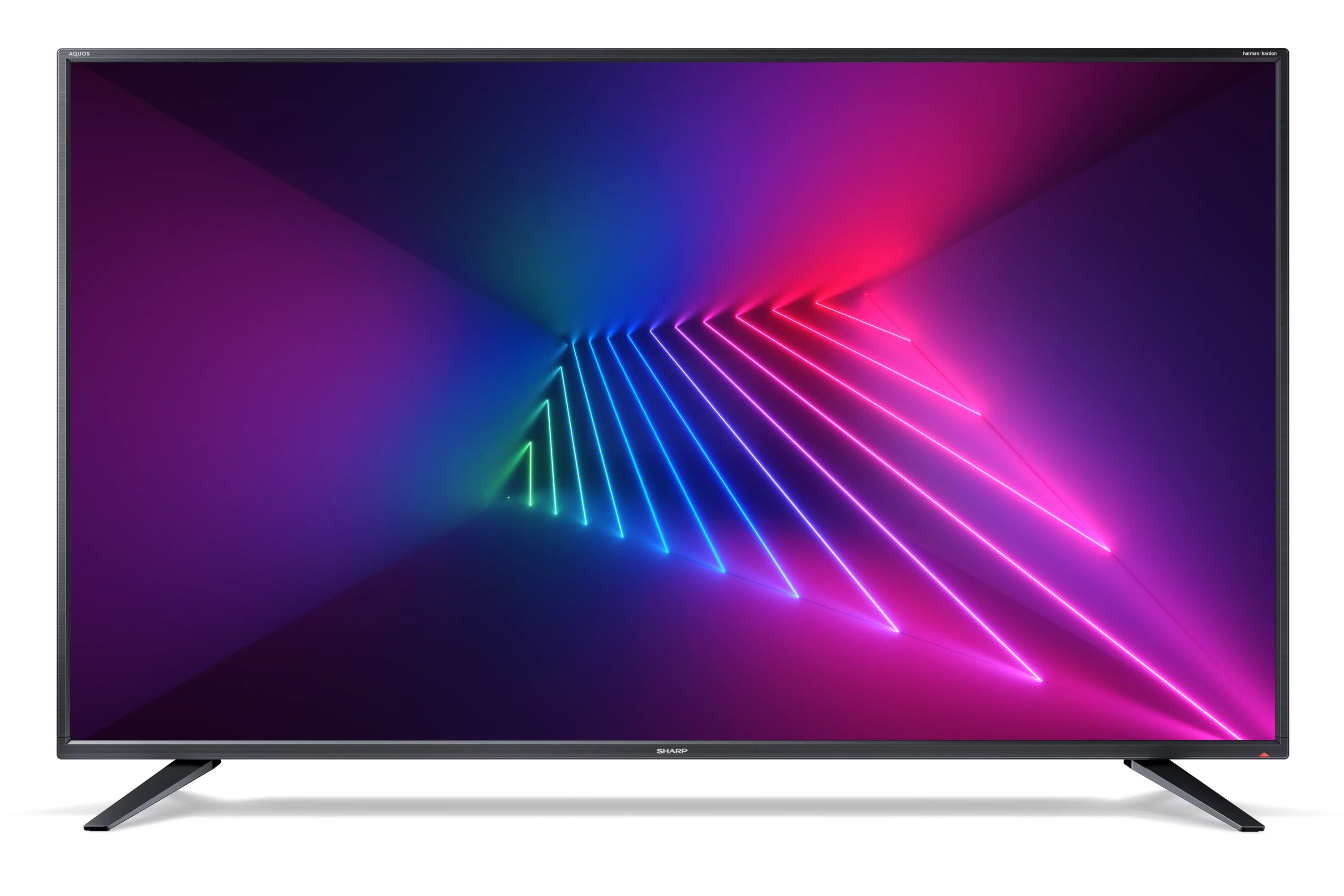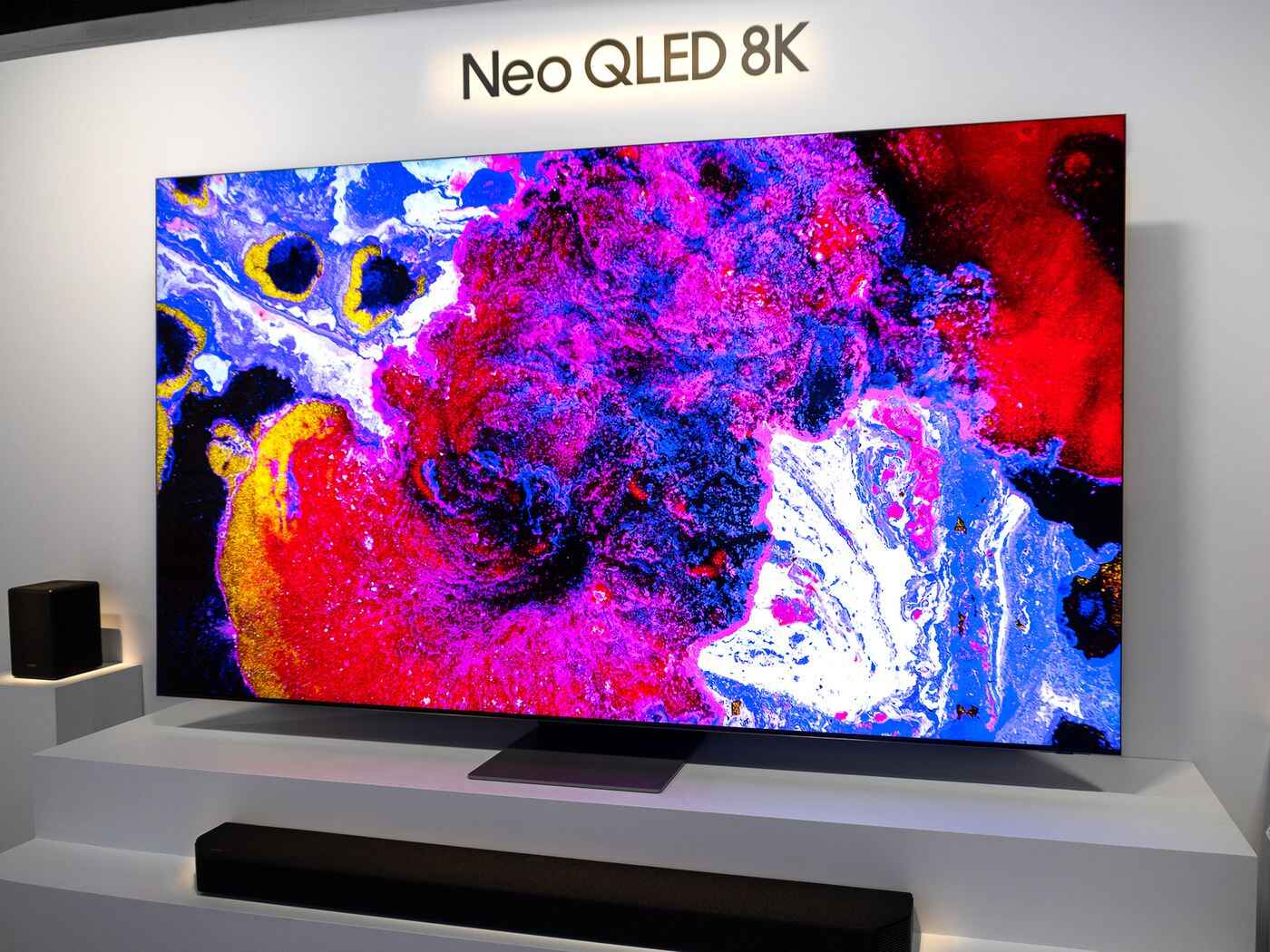Introduction
Smart TVs have revolutionized the way we experience television. With their sleek designs, advanced features, and seamless integration with the internet, these devices have become a staple in many households. However, with great power comes great responsibility, and it’s important to understand the implications of using a smart TV in terms of energy consumption.
A smart TV combines traditional television functionality with internet connectivity, allowing users to stream content from popular platforms like Netflix, Hulu, and YouTube, as well as access social media, browse the web, and even play games. While these features provide endless entertainment options, they also require a significant amount of electricity to operate.
Understanding how a smart TV uses electricity is essential for both environmental and economic reasons. By gaining insights into the energy consumption of these devices, consumers can make informed decisions about their usage and take steps to reduce their carbon footprint as well as their energy bills.
In this article, we will explore how a smart TV uses electricity per hour, the factors that influence power consumption, and provide tips on how to reduce energy usage without sacrificing your viewing experience. So, let’s dive in and uncover the energy impact of these cutting-edge entertainment devices.
Understanding Smart TVs
Smart TVs are television sets that are equipped with internet connectivity and the ability to access a wide range of digital content. Unlike traditional TVs, which rely on cable or satellite connections for content, smart TVs enable users to stream movies, TV shows, music, and more from popular online platforms.
These devices are powered by complex software systems that allow them to connect to the internet, run apps, and perform various functions. They often come with built-in Wi-Fi capabilities or Ethernet ports, which enable them to connect to your home network and access online services.
Smart TVs provide a user-friendly interface that allows viewers to access content through a graphical menu system or voice commands. With the help of remote controls or smartphone apps, users can browse through different streaming platforms, search for specific shows or movies, and even customize their viewing preferences.
One of the key advantages of a smart TV is its versatility. It allows users to go beyond traditional TV channels and access a vast array of online content on demand. Whether it’s streaming the latest episodes of your favorite series, watching viral videos on YouTube, or catching up on the latest news through online news platforms, smart TVs offer a personalized and interactive entertainment experience.
Furthermore, smart TVs often come equipped with additional features such as screen mirroring, where users can display the content from their smartphones or tablets onto the TV screen. This enables a seamless multi-device experience and enhances the overall entertainment value.
With the rise of streaming platforms and the increasing popularity of online content, smart TVs have become a popular choice for consumers seeking convenience and flexibility in their viewing habits. As technology continues to advance, smart TVs are expected to become even more sophisticated, offering enhanced connectivity, improved picture quality, and greater integration with other smart devices.
In the next sections, we will explore how a smart TV uses electricity, the factors that influence its power consumption, and how you can optimize energy usage without compromising your viewing experience. So, let’s dig deeper into the fascinating world of smart TV energy consumption.
How Does a Smart TV Use Electricity?
A smart TV uses electricity to power its various components and perform its numerous functions. When you turn on a smart TV, it consumes electricity to light up the display panel, process and decode digital signals, run the operating system, and connect to the internet.
The primary component of a smart TV that requires significant energy is the display panel. The display panel is responsible for rendering the images and videos that you see on the screen. The brightness level, resolution, and size of the display panel all impact its power consumption. Large, high-resolution displays tend to consume more electricity compared to smaller, lower-resolution ones.
In addition to the display panel, the processing unit of a smart TV requires power to run the operating system and applications. The operating system provides the interface and functionalities of the smart TV, allowing you to navigate menus, stream content, and access various apps. The more sophisticated the operating system and apps, the more processing power and electricity they require.
Another energy-consuming component in a smart TV is the networking module, which enables the TV to connect to the internet and access online content. The networking module includes Wi-Fi or Ethernet capabilities and consumes electricity to maintain a stable connection and transfer data between your TV and the internet.
The audio system of a smart TV also contributes to its power consumption. Modern smart TVs come with built-in speakers or audio systems that produce sound. While the power usage of the audio system is relatively low compared to other components, it adds to the overall electricity consumption.
Furthermore, smart TVs often have additional features like USB ports, HDMI inputs, and card slots, which allow users to connect external devices such as gaming consoles, Blu-ray players, or media streaming devices. These external devices may require their own power supply, increasing the overall energy consumption of the TV.
It’s important to note that the power consumption of a smart TV can vary depending on the manufacturer, model, and usage patterns. While some smart TVs are designed to be more energy-efficient, others may consume more power even when in standby mode.
In the next section, we will discuss the factors that influence the power consumption of a smart TV and how these variables can impact your electricity bills. So, let’s explore the key factors affecting smart TV energy consumption.
Factors that Influence Power Consumption
The power consumption of a smart TV can be influenced by several factors. Understanding these variables can help you make informed decisions about your usage and optimize energy consumption. Let’s explore the key factors that influence the power consumption of a smart TV:
- Screen Size and Resolution: The size and resolution of the display panel directly impact the energy consumption of a smart TV. Larger screens and higher resolutions, such as 4K or 8K, require more power to produce vibrant and detailed visuals. If energy efficiency is a concern, consider opting for a smaller screen size or a lower resolution.
- Display Settings: The brightness and contrast settings of the TV can significantly affect its power consumption. Higher brightness levels and excessive contrast require more energy to produce vivid images. Adjusting the display settings to an optimal level can help reduce power consumption without compromising image quality.
- Content Type: Different types of content require varying levels of power to render on a smart TV. Streaming videos, especially high-definition or 4K content, generally consume more energy compared to displaying static images or browsing through menus. Keep in mind that energy consumption may fluctuate depending on the content you are viewing.
- Network Connectivity: The method of connecting your smart TV to the internet can impact its power consumption. Wired Ethernet connections tend to be more energy-efficient than Wi-Fi connections. However, if Wi-Fi is the only available option, ensuring a strong and stable connection can help minimize power usage during data transfers.
- Usage Habits: Your usage patterns can play a significant role in the energy consumption of a smart TV. Leaving the TV on when not in use or keeping it in standby mode for extended periods can result in unnecessary power consumption. Turning off the TV completely when not in use or utilizing energy-saving features can help reduce energy usage.
- External Devices and Accessories: Connecting external devices and accessories to your smart TV, such as gaming consoles, soundbars, or USB devices, can increase power consumption. These devices may require their own power supply and can contribute to the overall energy usage of the TV. Disconnecting them when not in use can help save energy.
By considering these factors and making conscious choices, you can optimize the energy consumption of your smart TV and, in turn, reduce your electricity bills. In the next section, we will explore the average power consumption of smart TVs and shed light on the energy-saving features they offer. So, let’s delve into the numbers and find out how much energy a smart TV typically consumes.
Average Power Consumption of Smart TVs
The power consumption of a smart TV can vary depending on the specific model and usage patterns. However, it’s helpful to have an idea of the average power consumption to understand the energy impact of these devices. On average, a 40 to 60-inch smart TV consumes around 60 to 100 watts of power when in use. This value may fluctuate based on factors such as screen brightness, content type, and settings.
It’s important to note that standby power consumption is also a significant consideration. When a smart TV is in standby mode, it continues to consume electricity even though it’s not actively being used. The standby power consumption of a smart TV can range from 1 to 5 watts, depending on the model. While this may seem like a relatively low amount, it can add up over time, especially if you have multiple smart TVs in your household.
Energy efficiency standards have pushed manufacturers to develop more energy-efficient smart TVs. Many newer models are equipped with energy-saving features like automatic power-off, eco-mode, and motion sensors that can detect when there is no activity and reduce energy usage accordingly. These features help minimize standby power consumption and ensure that the TV consumes less energy when not in use.
It’s worth mentioning that the energy consumption of a smart TV can vary significantly between different brands and models. Some manufacturers prioritize energy efficiency and design their TVs to consume less power, while others may focus more on the performance and features of their devices, resulting in higher energy consumption. When purchasing a smart TV, it’s a good idea to compare the energy efficiency ratings and opt for models that have a lower energy consumption during both usage and standby modes.
By being mindful of the average power consumption of smart TVs and selecting energy-efficient models, you can reduce your environmental impact and save on energy costs. However, energy savings are not limited to the TV itself. In the next section, we will provide you with tips on how to further reduce power consumption while enjoying the benefits of your smart TV. So, let’s explore some practical ways to optimize energy usage.
Energy-saving Features of Smart TVs
Smart TV manufacturers are increasingly incorporating energy-saving features into their devices to help consumers reduce power consumption. These features aim to optimize energy usage without compromising the viewing experience. Here are some common energy-saving features found in smart TVs:
- Automatic Power-Off: Many smart TVs come with an automatic power-off feature that allows users to set a specific time for the TV to turn off when there is no activity. This is particularly useful if you tend to fall asleep while watching TV or forget to turn it off when you leave the room. By utilizing this feature, you can eliminate unnecessary power consumption during prolonged periods of inactivity.
- Eco-Mode: Eco-mode is a power-saving setting that adjusts various aspects of the TV’s performance to optimize energy usage. It may lower the screen brightness, reduce the backlight intensity, or adjust the audio settings to consume less power. Enabling eco-mode can help save energy while still maintaining acceptable picture and sound quality.
- Motion Sensors: Some advanced smart TVs are equipped with motion sensors that can detect when there is no movement in the room. When no activity is detected for a certain period, the TV will automatically enter a low-power mode or even turn off. This feature ensures that the TV is not consuming unnecessary energy when no one is present in the room.
- Light Sensors: The presence of light sensors in smart TVs allows them to automatically adjust the display brightness based on the ambient light conditions. By optimizing the brightness level according to the lighting in the room, the TV can conserve energy without compromising the visual experience. This feature ensures that the TV is not excessively bright and consuming more power than necessary.
- Energy Efficiency Certifications: Look for smart TVs that have received energy efficiency certifications such as ENERGY STAR. These certifications indicate that the TV meets certain performance standards for energy consumption. Choosing a TV with an ENERGY STAR label ensures that it has been independently verified to be energy-efficient and can help you make a more environmentally friendly choice.
It’s important to explore the settings and options available on your smart TV to fully utilize these energy-saving features. Experimenting with different settings and finding the right balance between energy efficiency and optimal viewing experience will not only help reduce your electricity bills but also contribute to environmental sustainability.
In the next section, we will provide you with practical tips on how you can further reduce the power consumption of your smart TV. These tips can be easily implemented and will help you maximize energy savings. So, let’s dive into these useful strategies!
Tips for Reducing Power Consumption of a Smart TV
While smart TVs are great for entertainment, they can consume a significant amount of energy. However, there are several simple and effective strategies you can implement to reduce the power consumption of your smart TV. Here are some helpful tips:
- Adjust Display Settings: Lowering the brightness and contrast levels of your TV can significantly reduce power consumption. Experiment with the settings to find the optimal balance between energy savings and picture quality.
- Enable Energy-Saving Modes: Take advantage of the energy-saving or eco-mode feature on your smart TV. This mode automatically adjusts various settings to reduce power consumption while maintaining an acceptable viewing experience.
- Turn Off Ambient Lighting: Eliminate unnecessary ambient lighting in the room where your smart TV is located. Bright lighting can make the screen appear dimmer, leading to higher brightness settings on the TV and increased power consumption.
- Utilize Sleep Timer or Automatic Power-Off: Take advantage of the sleep timer feature or the automatic power-off function on your smart TV to ensure it turns off when not in use. This prevents unnecessary power consumption during periods of inactivity.
- Disconnect External Devices: If you have connected external devices to your smart TV, such as gaming consoles or media streaming devices, consider unplugging them when not in use. These devices may consume power even when the TV is turned off.
- Limit Streaming Quality: Streaming high-definition or 4K content requires more power. If energy conservation is a priority, consider adjusting the streaming quality settings to a lower resolution or utilize data-saving modes when available.
- Update Firmware: Keep your smart TV’s firmware up to date. Manufacturers often release firmware updates that include performance enhancements and energy-saving features. These updates can help optimize the power consumption of your TV.
- Utilize Standby Modes Wisely: Be mindful of the standby power consumption of your smart TV. If you’re not going to use the TV for an extended period, consider completely turning it off instead of leaving it in standby mode. Standby mode still consumes electricity.
- Consider a Smart Power Strip: Using a smart power strip with energy-saving features can help cut down on standby power consumption. These power strips automatically detect when the TV is turned off and cut power to other connected devices, preventing energy loss.
By implementing these tips, you can significantly reduce the power consumption of your smart TV without compromising your viewing experience. Not only will you save on your energy bills, but you’ll also contribute to a more sustainable environment by reducing your carbon footprint.
Remember, even small changes in your TV usage habits can make a significant difference in energy savings over time. So, let’s start implementing these energy-saving strategies and make the most of our smart TVs while minimizing their impact on the environment!
Conclusion
Smart TVs have undoubtedly transformed our television viewing experience, providing us with a world of entertainment and connectivity at our fingertips. However, it’s essential to be aware of the energy consumption associated with these devices and take steps to reduce their impact on the environment and our energy bills.
In this article, we explored the various aspects of smart TV energy consumption. We began by understanding how smart TVs use electricity, delving into the components that consume power, such as the display panel, processing unit, networking module, and audio system. We then discussed the factors that influence power consumption, including screen size, resolution, content type, network connectivity, and usage habits.
Next, we examined the average power consumption of smart TVs and highlighted the standby power consumption that can accumulate over time. We also discussed the energy-saving features commonly found in smart TVs, such as automatic power-off, eco-mode, motion sensors, light sensors, and energy efficiency certifications.
To further optimize energy usage, we provided practical tips for reducing the power consumption of smart TVs. These tips included adjusting display settings, enabling energy-saving modes, utilizing sleep timers or automatic power-off, disconnecting external devices, limiting streaming quality, updating firmware, and utilizing standby modes wisely.
By implementing these tips, not only can we save on our energy bills but also contribute to environmental sustainability. Reducing the power consumption of our smart TVs helps minimize our carbon footprint and promotes responsible energy usage.
As technology continues to advance, it is encouraging to see manufacturers placing a greater emphasis on energy efficiency and incorporating energy-saving features into smart TVs. However, as consumers, it is our responsibility to make informed choices and actively manage our energy use.
So, let’s continue to enjoy the convenience and entertainment that smart TVs offer while being mindful of their energy consumption. By combining our knowledge of smart TV power usage with practical energy-saving strategies, we can make a positive impact on both our wallets and the planet.







